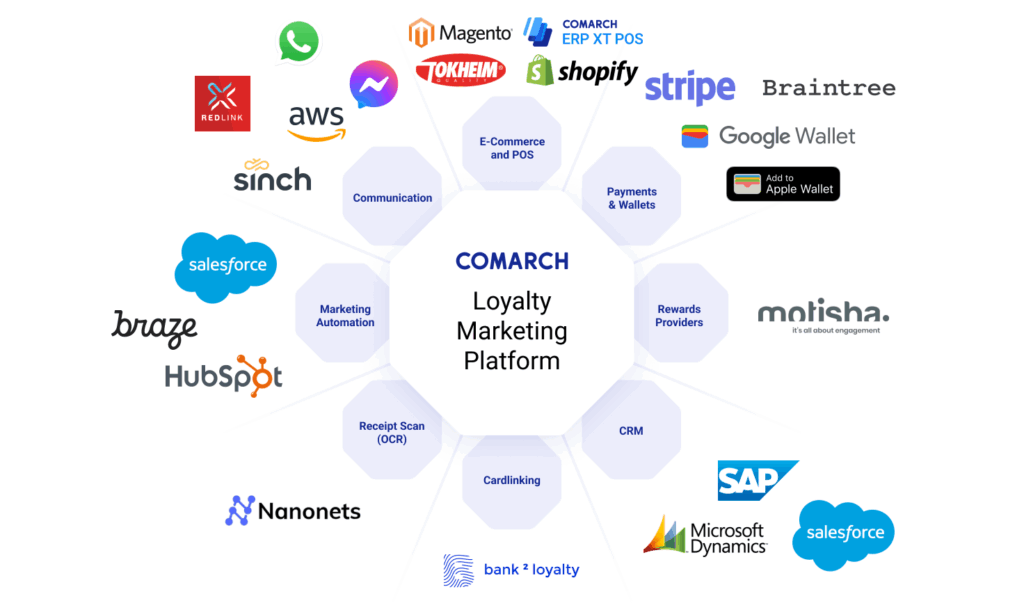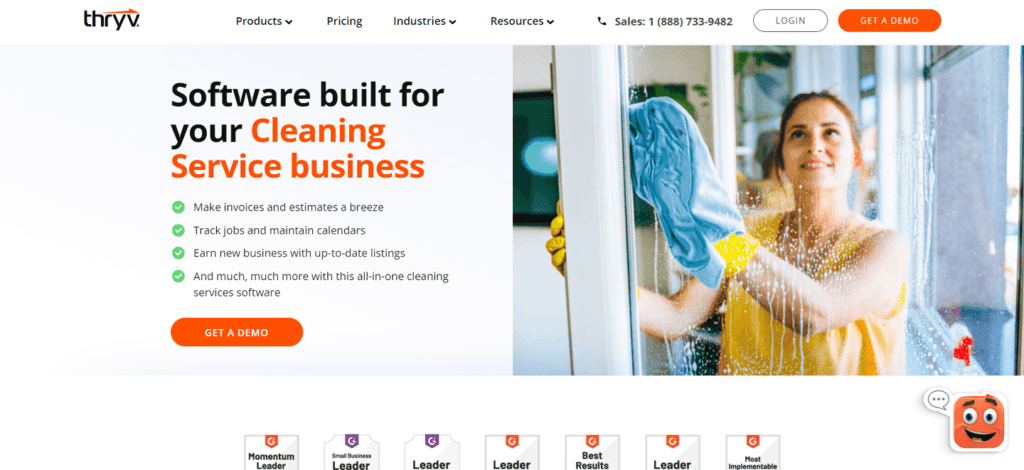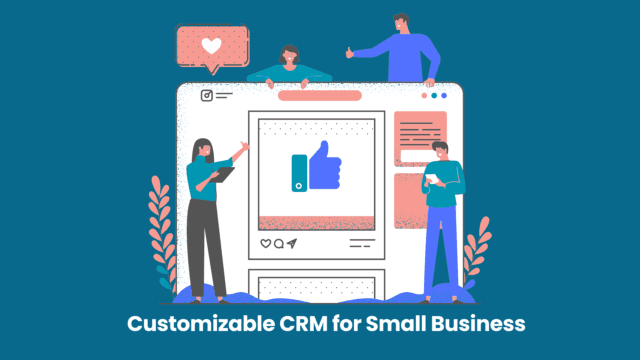
The Power of the Customer: Why CRM, Marketing, and Loyalty Programs Matter
In today’s hyper-competitive market, simply having a product or service isn’t enough. Businesses thrive on building lasting relationships with their customers. This is where the trifecta of Customer Relationship Management (CRM), strategic marketing, and robust loyalty programs come into play. These three elements, when interwoven effectively, create a powerful engine for sustainable growth, increased customer lifetime value (CLTV), and a strong brand presence. But what exactly is the magic formula? Let’s break it down.
Understanding the Core Components
Customer Relationship Management (CRM): The Heart of Customer Data
At its core, CRM is more than just a software solution; it’s a philosophy centered around understanding and nurturing customer relationships. A well-implemented CRM system acts as a centralized hub for all customer interactions, storing valuable data points that paint a comprehensive picture of each customer’s journey. This includes contact information, purchase history, communication logs, and even social media interactions.
Think of it as your digital rolodex, but infinitely more powerful. Instead of just storing names and numbers, CRM systems allow you to:
- Segment your audience: Categorize customers based on demographics, purchase behavior, engagement levels, and more.
- Personalize your interactions: Tailor your marketing messages, offers, and support experiences to resonate with individual customer preferences.
- Improve sales efficiency: Streamline the sales process, track leads, and identify opportunities for upselling and cross-selling.
- Enhance customer service: Provide faster, more efficient support by having all customer information readily available.
- Track and analyze performance: Monitor key metrics like customer acquisition cost (CAC), CLTV, and customer satisfaction to continuously improve your strategies.
Without a solid CRM foundation, your marketing efforts are like shooting in the dark. You’re relying on guesswork rather than data-driven insights. A good CRM system is the bedrock upon which all your customer-centric initiatives are built.
Strategic Marketing: Reaching the Right Audience with the Right Message
Marketing, in the context of customer-centricity, is all about delivering the right message, to the right person, at the right time. It’s about building brand awareness, generating leads, nurturing relationships, and ultimately, driving sales. But in an age of information overload, simply shouting your message from the rooftops isn’t enough. Effective marketing requires a laser-focused approach.
Here’s where the synergy with CRM becomes apparent. CRM data provides the insights needed to:
- Identify your target audience: Understand who your ideal customers are, their needs, and their pain points.
- Develop targeted campaigns: Craft marketing messages that resonate with specific customer segments.
- Choose the right channels: Determine the most effective channels to reach your target audience (e.g., email, social media, paid advertising).
- Personalize your messaging: Use customer data to personalize your emails, website content, and other marketing materials.
- Track and measure results: Monitor the performance of your marketing campaigns and make data-driven adjustments.
This is where the art of marketing meets the science of data. By leveraging the power of CRM, marketers can move beyond generic campaigns and create truly personalized experiences that drive engagement and conversions.
Loyalty Programs: Rewarding and Retaining Your Best Customers
Loyalty programs are a strategic investment in your existing customer base. They are designed to reward repeat business, foster a sense of belonging, and encourage customers to choose your brand over the competition. When implemented effectively, loyalty programs can significantly increase customer lifetime value and reduce customer churn.
The key to a successful loyalty program lies in providing value to your customers. This can take many forms, including:
- Points-based systems: Customers earn points for purchases, which they can redeem for discounts, free products, or other rewards.
- Tiered programs: Customers are placed into different tiers based on their spending or engagement, with each tier unlocking more exclusive benefits.
- Exclusive access: Offer early access to new products, special events, or members-only content.
- Personalized offers: Tailor rewards and promotions to individual customer preferences.
- Gamification: Incorporate game-like elements, such as challenges, badges, and leaderboards, to increase engagement.
A well-designed loyalty program is not just about giving away freebies; it’s about building a strong emotional connection with your customers. It’s about making them feel valued, appreciated, and part of a community. And when customers feel that connection, they are far more likely to stick around.
The Interplay: How CRM, Marketing, and Loyalty Programs Work Together
The true power of these three components lies in their interconnectedness. They are not independent entities; they are interdependent parts of a larger ecosystem. Think of them as three gears that mesh together to drive the engine of customer-centric growth.
Here’s how they work together:
- CRM provides the data: CRM systems gather and store the customer data that fuels your marketing and loyalty programs. This data provides the insights needed to understand your customers, personalize your interactions, and measure your results.
- Marketing drives engagement: Marketing campaigns use CRM data to target the right customers with the right messages, driving engagement and conversions. This engagement, in turn, generates more data that feeds back into the CRM system.
- Loyalty programs reward behavior: Loyalty programs incentivize repeat purchases and encourage customers to engage with your brand. This engagement generates more data that can be used to personalize marketing efforts and improve the loyalty program itself.
- The cycle repeats: This cycle of data collection, analysis, action, and measurement is a continuous loop. As you gather more data, you can refine your strategies, improve your results, and build even stronger customer relationships.
This synergistic relationship is what separates successful businesses from those that struggle. By integrating these three components, you can create a powerful customer-centric strategy that drives growth, boosts profitability, and builds lasting customer loyalty.
Building a Successful CRM Strategy
Implementing a successful CRM strategy requires careful planning and execution. Here are some key steps to follow:
1. Define Your Goals and Objectives
Before you start implementing any CRM system, you need to clearly define your goals and objectives. What do you want to achieve with CRM? Are you looking to increase sales, improve customer service, or reduce churn? Having clear goals will help you choose the right CRM system and measure your success.
2. Choose the Right CRM System
There are many CRM systems available, each with its own strengths and weaknesses. Consider your specific needs and requirements when choosing a system. Factors to consider include:
- Features: Does the system offer the features you need, such as lead management, sales automation, marketing automation, and customer service support?
- Scalability: Can the system grow with your business?
- Integrations: Does the system integrate with your existing tools and systems, such as your website, email marketing platform, and accounting software?
- Ease of use: Is the system user-friendly and easy to learn?
- Price: What is your budget for a CRM system?
3. Implement Your CRM System
Once you’ve chosen a CRM system, you need to implement it. This involves data migration, system configuration, and user training. It’s important to plan your implementation carefully and involve all relevant stakeholders.
4. Train Your Team
Your CRM system is only as good as the people who use it. Provide adequate training to your team on how to use the system effectively. This will ensure that your team is able to leverage the full potential of the system.
5. Gather and Analyze Data
Once your CRM system is up and running, you need to start gathering and analyzing customer data. This data will provide insights into your customers’ behavior, preferences, and needs. Use these insights to improve your marketing campaigns, personalize your interactions, and improve your customer service.
6. Measure and Optimize
Continuously measure your results and make adjustments as needed. Track key metrics, such as customer acquisition cost (CAC), customer lifetime value (CLTV), and customer satisfaction, to assess the effectiveness of your CRM strategy. Use these metrics to optimize your campaigns, personalize your interactions, and improve your customer service.
Crafting Effective Marketing Campaigns with CRM
CRM data is the fuel that powers effective marketing campaigns. Here’s how to leverage CRM data to create campaigns that resonate with your target audience:
1. Segment Your Audience
Use CRM data to segment your audience into different groups based on demographics, purchase history, engagement levels, and other relevant factors. This will allow you to tailor your marketing messages to specific customer segments.
2. Personalize Your Messaging
Use CRM data to personalize your marketing messages. Address customers by name, reference their past purchases, and offer personalized recommendations based on their preferences. Personalization can significantly increase engagement and conversions.
3. Automate Your Marketing
Use marketing automation tools to automate your marketing campaigns. Set up automated email sequences, trigger-based emails, and other automated workflows to nurture leads, engage customers, and drive sales.
4. Test and Optimize
Continuously test and optimize your marketing campaigns. Experiment with different messaging, offers, and channels to see what resonates best with your target audience. Use A/B testing to compare different versions of your campaigns and identify what works best.
5. Utilize Multiple Channels
Don’t put all your eggs in one basket. Utilize multiple marketing channels, such as email, social media, paid advertising, and content marketing, to reach your target audience. Use CRM data to personalize your messaging across all channels.
Designing a Winning Loyalty Program
A well-designed loyalty program can be a powerful tool for building customer loyalty and driving repeat business. Here are some key considerations when designing a loyalty program:
1. Define Your Goals
What do you want to achieve with your loyalty program? Are you looking to increase sales, reduce churn, or improve customer engagement? Having clear goals will help you design a program that is aligned with your business objectives.
2. Choose the Right Rewards
Offer rewards that are valuable to your customers. Consider offering discounts, free products, exclusive access, or personalized offers. Choose rewards that align with your brand and your customers’ preferences.
3. Make it Easy to Join and Use
Make it easy for customers to join your loyalty program and earn rewards. Simplify the enrollment process and provide clear instructions on how to earn and redeem rewards. Make the program accessible on all devices, including mobile.
4. Communicate Regularly
Communicate regularly with your loyalty program members. Send them updates on their points balance, new rewards, and exclusive offers. Keep them engaged with your brand and make them feel valued.
5. Measure and Optimize
Continuously measure the performance of your loyalty program. Track key metrics, such as enrollment rates, redemption rates, and customer lifetime value. Use these metrics to optimize your program and make it even more effective.
Measuring Success: Key Metrics to Track
To truly understand the impact of your CRM, marketing, and loyalty program efforts, you need to track the right metrics. Here are some key performance indicators (KPIs) to monitor:
- Customer Acquisition Cost (CAC): The cost of acquiring a new customer.
- Customer Lifetime Value (CLTV): The predicted revenue a customer will generate over their lifetime.
- Customer Churn Rate: The percentage of customers who stop doing business with you over a given period.
- Customer Satisfaction (CSAT): How satisfied customers are with your products or services.
- Net Promoter Score (NPS): How likely customers are to recommend your brand to others.
- Conversion Rates: The percentage of customers who take a desired action, such as making a purchase or signing up for a newsletter.
- Engagement Metrics: Measuring how customers interact with your brand, such as email open rates, click-through rates, and social media engagement.
- Redemption Rates: The percentage of loyalty program members who redeem their rewards.
Regularly reviewing these metrics allows you to identify areas for improvement and make data-driven decisions that drive growth.
Common Pitfalls to Avoid
While the potential benefits of integrating CRM, marketing, and loyalty programs are vast, there are also common pitfalls to avoid. Here are some key areas to watch out for:
- Lack of Data Integration: Siloed systems that don’t share data can undermine your efforts. Ensure your CRM, marketing automation, and loyalty program platforms are integrated to provide a unified customer view.
- Poor Data Quality: Inaccurate or incomplete data can lead to ineffective marketing campaigns and a poor customer experience. Invest in data cleansing and validation to maintain data integrity.
- Ignoring Customer Feedback: Failing to listen to customer feedback can lead to dissatisfaction and churn. Actively solicit and respond to customer feedback to improve your products, services, and overall customer experience.
- Lack of Personalization: Generic, one-size-fits-all marketing messages are ineffective. Leverage CRM data to personalize your communications and offers to individual customer preferences.
- Neglecting Customer Service: Poor customer service can quickly erode customer loyalty. Invest in training and resources to provide excellent customer support.
- Focusing Solely on Acquisition: Prioritizing customer acquisition over retention is a costly mistake. Invest in loyalty programs and customer relationship management to retain your existing customers.
By being mindful of these pitfalls, you can increase your chances of success.
The Future of CRM, Marketing, and Loyalty Programs
The landscape of CRM, marketing, and loyalty programs is constantly evolving. Here are some trends to watch out for:
- Artificial Intelligence (AI): AI-powered CRM systems and marketing automation tools can personalize customer experiences, automate tasks, and provide valuable insights.
- Hyper-Personalization: Using data to create highly personalized experiences that cater to individual customer preferences and behaviors.
- Omnichannel Marketing: Delivering a seamless customer experience across all channels, including email, social media, website, and in-store.
- Mobile Optimization: Providing a mobile-first experience that is optimized for all devices.
- Data Privacy and Security: Protecting customer data and complying with data privacy regulations.
- Focus on Sustainability and Social Responsibility: Customers are increasingly looking for brands that are committed to sustainability and social responsibility.
Staying ahead of these trends will be crucial for businesses that want to remain competitive in the years to come.
Conclusion: Cultivating Lasting Customer Relationships
In conclusion, the synergy between CRM, strategic marketing, and robust loyalty programs is the cornerstone of building lasting customer relationships and driving sustainable growth. By embracing a customer-centric approach, leveraging the power of data, and continuously optimizing your strategies, you can create a loyal customer base that fuels your business’s success.
Remember, it’s not just about acquiring customers; it’s about nurturing those relationships, providing value, and making your customers feel appreciated. When you put the customer at the heart of everything you do, you’re not just building a business; you’re building a community.
So, invest in your CRM, refine your marketing efforts, and design a loyalty program that rewards your best customers. The rewards – increased customer lifetime value, reduced churn, and a thriving brand – will be well worth the effort.

